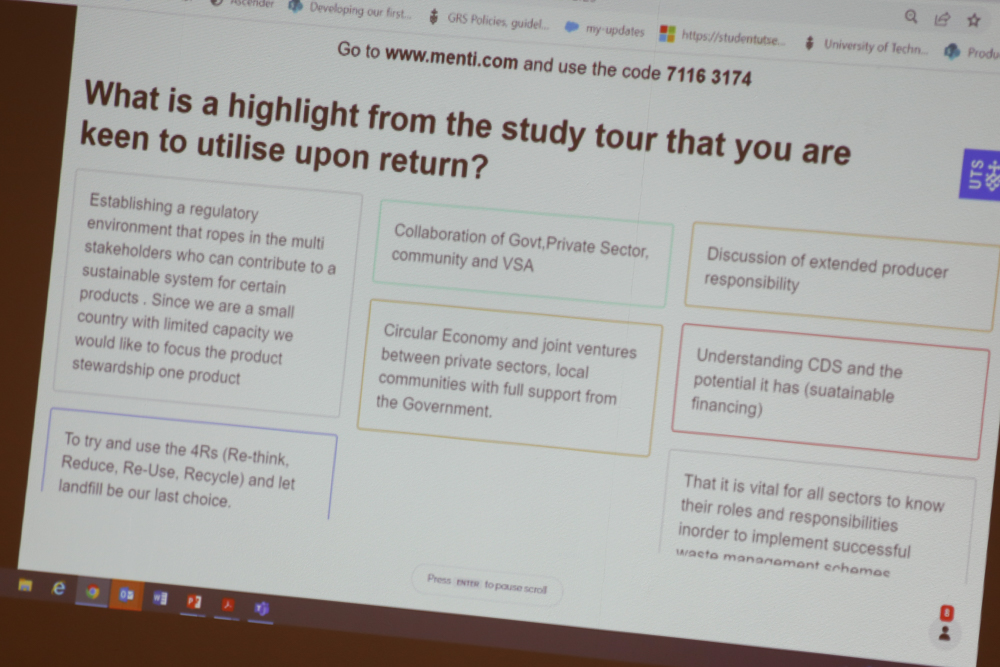It’s hard to believe we’re at the end.
It’s been an intense experience for the Sustainable Financing for Waste Management Study Tour participants. Over the past two weeks we’ve travelled to three different cities in Australia via trains, planes and buses, held more than a dozen Talanoas with regulators, operators, government representatives and ministries, visited more than 15 different waste management sites, and even attended a national conference to discuss waste management and the environment.
All of these activities have been aimed at fostering understanding, encouraging learning, and building capacity, and on the final day, study tour participants started to bring it all together to help develop their own scheme designs for their specific countries.
Our final Talanoa was held with the Product Stewardship Center of Excellence, who help to ensure that producers and retailers better manage the impacts of products and material streams throughout their lifecycle. They offered eight key steps for participants to consider when designing their schemes:
1) Why: understanding why the scheme needs to be implemented and what problem needs to be addressed.
2) Scope: the products that need to be included, the geographic range, potential markets and companies, and how to work in a common supply chain.
3) Objectives: what needs to be achieved environmentally, economically, and socially.
4) Outcomes: identifying short, medium and long-term goals to drive the scheme.
5) Financing: who is going to pay for the scheme, how this is going to be done, and when the finances will be recovered.
6) Governance: who manages those funds, how are costs charged, and what regulations are in place to ensure transparency.
7) Risks: considering the possibility of companies not contributing, irresponsible collection, or products being exported to developing countries.
8) Operations: operational principles and procedures, ensuring responsibility, service levels, definition of roles, design, reuse, repair, and compliance.
The participants put these steps to the test, working in breakout groups to discuss four important issues – e-waste, end of life vehicles, tyres and white goods – and discussing all the elements that need to be considered when developing their schemes.
And with that, the Sustainable Financing for Waste Management Study Tour came to an end.
In a final farewell, participants thanked the PacWastePlus and GEF ISLANDS team for the incredible efforts they made to make this trip possible, and many offered humbling remarks about the impact the trip has had.
‘We came with nothing, but we’re leaving with so much,’ commented one participant. ‘I’ve been in government for more than 20 years but this is one of the highlights of my career. Thank you. Thank you for everything.’
‘It’s been absolutely heart-warming,’ commented another. ‘We all have experience in different fields, but somehow we came together and found a common language, the language of waste management. This is the direction we need to take and I’m honoured to have been part of it all.’
‘We found momentum here and we need to keep it going,’ commented a third. ‘You’ve equipped with all the information and knowledge we could ask for, and we hope that in the future, you will be proud of what we will achieve. We’re ready to go back to the islands, to lobby and advocate and yell for changes. Let’s go home and make it happen.’
